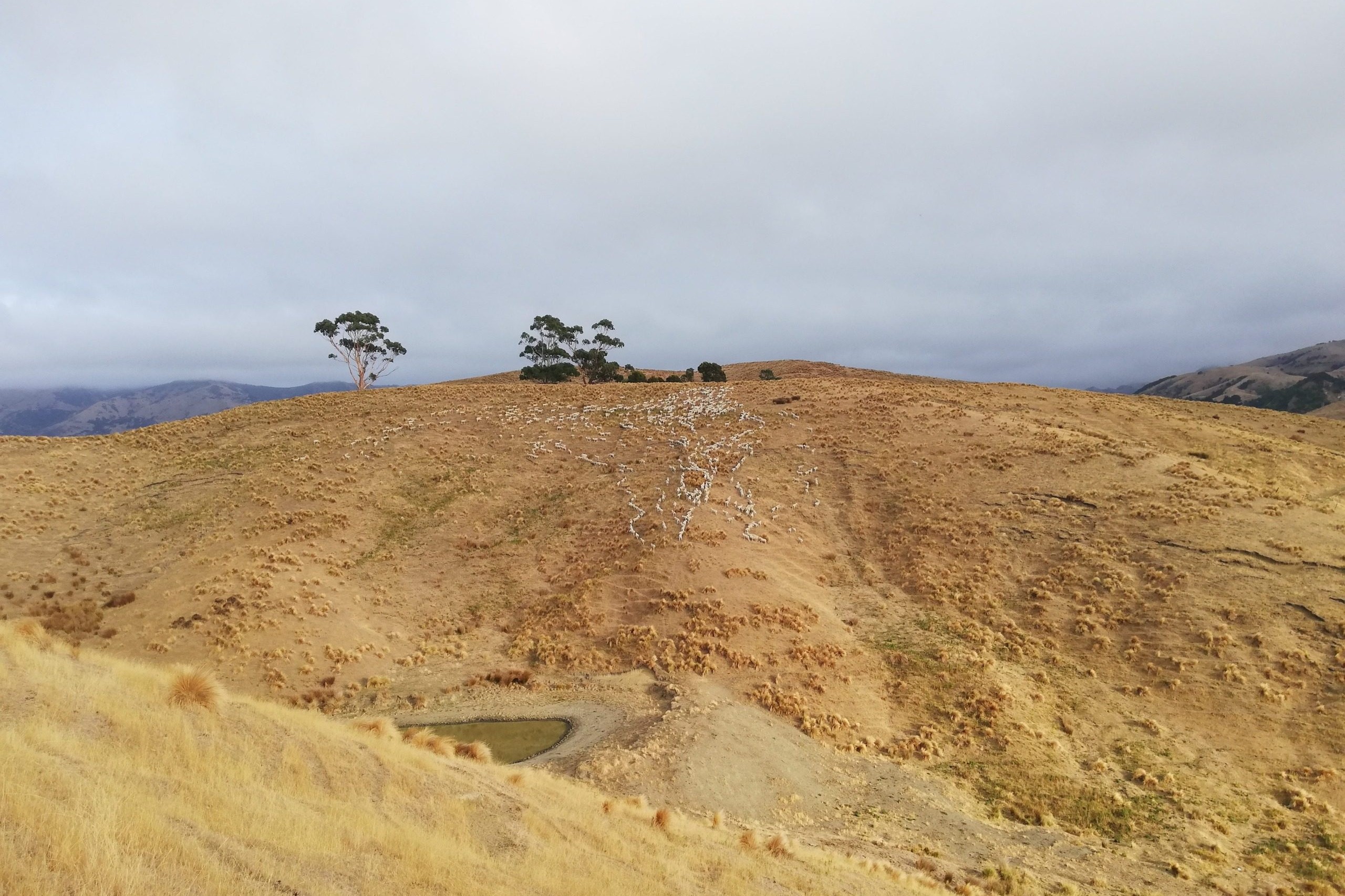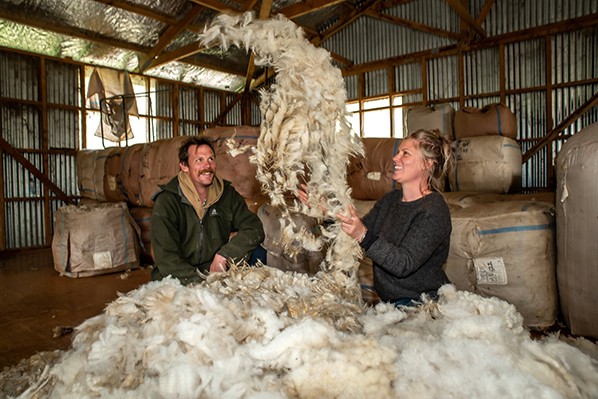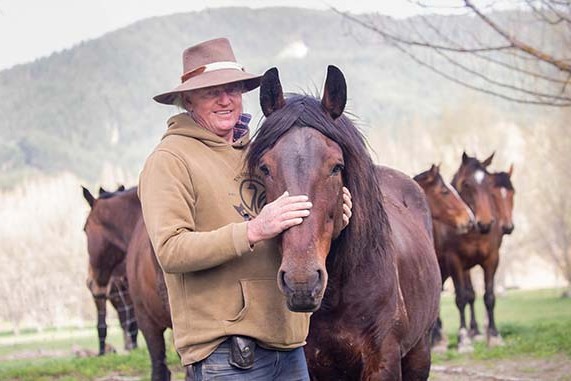Concern drives drought day
The rapid drying out of Marlborough farmland led to local farmers organising a Drought Day recently. Joanna Grigg went along to find out more.

The rapid drying out of Marlborough farmland led to local farmers organising a Drought Day recently. Joanna Grigg went along to find out more.
It won’t make it rain but a community get-together with great food, rugby heroes and the Mitre 10 Cup certainly helps.
About 90 people attended the Ward Drought Day on April 30. The cumulative pasture growth for Marlborough is barely tracking three tonnes a hectare for the year to date. Usually, it would be 5t/ha grown by May.
Ally Avery, local farmer and member of the Top of the South drought committee, said she wanted to make the Ward event happen after speaking to locals.
“I kept hearing how bad things were”.
“The focus was on the fruit growers in Tasman and I felt we needed to do something for farmers here in Marlborough too.”
Farm consultant Brent Boyce, FarmWise, was instrumental in organising the drought day and also the extension of adverse event government funding through to November 30. Based in Nelson, Boyce took a drive around Marlborough on Easter Sunday, after a friend’s 50th birthday in the Awatere.
“I went up all the back roads and the situation was dire.”
He wrote a three-page report – not requested by any group or individual but out of what he calls his unease for the farmers in the region and “my deep concern for the welfare of themselves, their livestock and their businesses”.
His three-page report was circulated around the farming community, Marlborough District Council and to MPI via the National Feed Working Group.
“We needed to get more government attention and action.”
He called for drought co-ordination at a national level, not just regional. He described the rainfall received on March 27 as too little and too late to have any positive effect on pasture covers and feed levels going into winter. Pasture covers were 500-700kg DM and stock were in lighter condition than normal. Some lucerne swards had greened but were sparse, with falling growth rates as temperatures dropped.
“I saw no winter drilled crops with leaf cover over the ground.”
The region typically takes a large number of dairy cows for winter grazing but it won’t be happening this year, he said.
“My deep concern (is) for the welfare of themselves, their livestock and their businesses.”
Committee chairman Richard Kempthorne, said Boyce’s report definitely contributed to an extension of government funding and a push to host a drought day. The event was organised in 13 days – a collaboration between local farm consultants, the committee, Rural Support Trust, Federated Farmers and Rural Women NZ. Two local farm case studies (The Homestead and Winterhome) were presented to farmers. They outlined the effects of drought and what they are doing to mitigate costs and deal with the often-stressful feeding or sale decisions.
The morning drop-in feed budgeting clinic, run by farm consultants Greg Sheppard and Brent Boyce, was taken up by 10 farmers.
“We were also able to get one or two farmers other forms of support they needed, beyond feed advice,” Greg said.
“If we helped one person then it’s worth it,” Brent said.
“We could talk and listen to farmers, on a one-on-one basis, and deal with quite serious issues.”
Professor Derrick Moot, Lincoln University, provided advice on treating plants recovering from drought, to help persistence. Professor Paul Kenyon, Massey University, gave timely advice on priority feeding in-lamb ewes and setting up grazing rotations.
The last comment of the day went to Ian Blair, who generates a monthly Marlborough climate report, and has been an avid gatherer and predictor of climate information. He looked back at years similar to 2021 (1996 and 2008) and they were dry to mid-June. According to Ian, rain would arrive on June 10.
On April 28, Mid and South Canterbury, and Otago were included in the 2021 drought adverse event and $90,000 of extra funding allocated.
Saved crop gets ewes flushed
Tom Cranswick was one of two farmers that shared their strategies for managing drought, at the Ward drought day. The onfarm profiles were commissioned by MPI as a resource for other farmers and to inform the Government of the situation.
Tom has been farm manager at the 665 effective hectare coastal sheep and beef farm, Winterhome, for two years. He swears by using saved brassica to flush older ewes in autumn.
“We tupped seven hundred ewes on rape leaf and stalk in 2020 and managed to keep scanning at 180%, with only 1.8% dry, so we expanded the area and sowed more rape last spring,” Tom said.
His approach has been to try and bring moisture forward into autumn, by sowing spring brassicas into the heavier soils. This autumn, 17 hectares of rape was used to graze 2000 ewes for 10 days prior and one cycle after joining with the ram (20 days). Tom calls this “the golden 20 days”.
Two-tooths were not tupped on rape, for two reasons. They had not been on rape before and they were in better condition than mixed age ewes so require a flushing effect but not a big weight gain lift. They were shifted every day for 10 days prior and 10 days after joining with the ram. Tom targets 63kg at mating and a 175% scanning.
Tom is disappointed in the low rainfall but has plans to keep next spring’s income by maintaining a good scanning rate, lambing hoggets and finishing 18-month heifers for the ‘cream on the top’, if possible. He writes down a fresh plan every two months or so.
“Getting things on paper really helps me see it clearly. Then I can refocus on the priorities and daily tasks.”
He ran a Farmax feed budget in early February, using normal predicted growth and below average growth scenarios. He wrote a plan based on this. He sold the remaining 600 store/prime lambs and committed to feed weaned calves balage for longer than usual. He fenced off cows onto a hard hill – counting them as ‘off-farm’ in his feed budget.
As it turned out, growth had been poor into May so he took further action to counter the feed deficit. Sheep nuts will be fed to 430 lighter ewes, with the aim of protecting their condition through to lambing. Tom estimates the ewes on nuts will lamb 120% instead of 100% without nuts. This difference is estimated at 516 lambs vs 430 lambs. At $100/lamb this is worth $8600, with a feed cost of $4800 ($480/tonne fed at 350 grams/head/day).
He will apply 10 tonnes (t) of nitrogen (N) in July onto 330ha of hill country, and 3.5t N on 35ha rape and 65ha grass pasture. There is also the option of selling more calves or the 18-month dry heifers, or grazing off dry hoggets, selling ewes or five-year ewes with lambs at foot.
“In January 2020, we realised it was really dry, we sold trade lambs and started feeding grain . . . we said let’s not hang around. We took the hit but protected next year’s income.”
He decided to put ewe hoggets to the ram for this reason – something queried at the field day. He is comfortable having a close equilibrium with spring covers and demand in spring. This is to reduce inefficient utilisation of spring growth later. His forecast shows demand may be higher than predicted covers for a time in September.
The April hogget body weight target was 47kg (they were 45kg mid-April) and 570 were joined. Tom expects 70% of the lambs to be weaned weighing at least 28kg. They are weaned the same day as the two-tooths. They typically fetch $85 as a store lamb.
Tom said that feeding out can be very tedious with the monotony. He and Ellie took a family holiday before starting feeding out. He values discussing plans with Ellie and his friends, and getting off-farm to play tennis at Kekerengu.
Drought cost $260k
An MPI-funded profile of a Ward farm has shown a loss of income and extra costs from the 2021 drought combining to be about $260,000. This is mainly in lost winter dairy grazing income ($120,000).
Kevin and Tom Loe, The Homestead, Ward Beach, along with stock manager Seymour Lambert, shared their experience of the 2021 drought with farm consultant Greg Sheppard. The family has been on the 1880ha farm since 1905 and acknowledges the strength of having a team approach to dealing with the situation.
Speaking at the Ward drought day, Sheppard said lower income came from destocking 2300 stock units ($70,000), buying 44 bales of balage ($5750), cattle grazing ($10,000) and a 50% yield reduction in summer rape crop ($29,400). Additional balage made cost $11,000 and a 30% reduction in winter cereal crops cost $11,250.
The Loes said they expect lost income and costs from droughts but it has been difficult as stock units were also lowered on the back of a dry 2020. The family are running 5300 su fewer than wintered in 2018 (now just under 7000su).
NIWA’s predictions for the future climate of Marlborough (commissioned by the Marlborough District Council in 2021) are for hot days to increase, especially at low elevations.
Pasture covers were 1100kg DM/ha early May and, if rainfall returns to normal, will be 1200 in August, Sheppard said. Ewes will be fully fed during August lambing if these covers are achieved but not if growth is below normal.
“Additional destocking or supplementary feed will be necessary to prevent underfeeding, animal health issues developing and to optimise livestock performance.”
The Loes made numerous changes as the drought bit. The establishment of winter crops was delayed until late April, cows and calves were weaned a month early (start of March), R1 year heifers and bulls are grazing off farm and ewes were fed balage over tupping.
Typically, 1200 lambs are traded over summer and autumn (only 780 this year). Rainfall for the year to date was 70.6mm (to April 28) which is about 150mm behind average. It comes after a very dry 2020 – just 420mm for the year. Due to a lack of stock water, about 600ha is not able to be grazed. The Loe’s are waiting for a planned community water scheme before installing reticulation to this area.
Sheppard noted that if normal pasture growth through winter does happen, then pasture cover on the coastal farm could be in excess of 1600kg DM/ha by the end of September.
“This could be a new and exciting challenge if the right mindset is taken.”
Plead for pasture care
Professor Derrick Moot, Lincoln University, pleaded with farmers to think about those “poor pasture plants out there”, recovering from a drought.
Speaking at the Ward drought day, he said treat pastures like you would a crop.
“Stay off recovering grass and let it restore its root reserves.”
“A new leaf grows every 100 thermal units so at 10 degrees a new leaf will grow every 10 days.”
“Three leaves will take 30 days.”
As a long-term plan for allowing summer dry pastures to recover with autumn rain, he suggests supplementary feeding stock on sacrifice paddocks, or using flat cultivable land for crops to hold higher stocking rates.
New analysis of data collected from permanent dryland pastures at Poukawa Research Centre over 20 years, showed six tonnes of the feed grew in spring, two in summer and 1.5 in autumn.
“September to November are the key growth months so your farm system should focus here,” he said.
He outlined data showing fantastic reasons to include legumes. A dryland pasture with nitrogen fixing plants with the cocksfoot (unirrigated) grew 15.7 tonnes of pasture over the year compared to 6.3 tonnes for cocksfoot only pasture.
“It used the same amount of water but grew a far higher tonnage.”
“All plants except legumes are deficient in nitrogen.”
He suggested a cheap drought recovery strategy was to drill 10kg of big seeded subterranean clover into the low grass cover blocks. Spinning on, even with a hand spinner, and trampling in with a mob of sheep, can do the trick.
Fewer frosts, more moisture lost
NIWA’s predictions for the future climate of Marlborough (commissioned by the Marlborough District Council in 2021) are for hot days to increase, especially at low elevations. This is a figure between one to 15 days more by 2040. The NIWA report said rainfall is expected to change only a small amount plus or minus 5% by 2040. By 2090 larger changes are expected, with seasons differing (summer decreases of up to 20%, winter increases of up to 40%). The potential evapotranspiration deficit looks to be the big change, up 50 to 150mm by 2040. It’s likely there will be fewer frosts, especially inland and at elevation.




